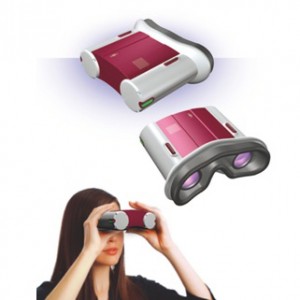 A Moorfields doctor has aimed to reinvent the way eye examinations are currently performed in eye hospitals through the creation of a new ocular imaging device, binocular optical coherence tomography (OCT).
A Moorfields doctor has aimed to reinvent the way eye examinations are currently performed in eye hospitals through the creation of a new ocular imaging device, binocular optical coherence tomography (OCT).
Developed by Dr Pearse Keane, the binocular OCT produces non-invasive high-resolution images of the eye in a fraction of a second and in greater detail than CT or MRI scanning.
For his work on the device, Dr Keane won a prestigious National Institute of Health Research (NIHR) Clinician Scientist award to fund the research. The NIHR award, which is just under £1m pounds will fund this fund further for the next five years.
The design of the device also allows patients to capture images from their own eyes without any assistance from a doctor or nurse. Small screens display a range of information to the patient, meaning that as well as image acquisition, the device is also capable of measuring visual acuity, reactions of the pupils to light and the movements of each eye.
It was hoped that in the short-term, binocular OCT devices would reduce the waiting time for patients when they attend appointments in hospital eye clinics and in the longer-term, could allow patients to monitor eye condition from their own home, local GP, pharmacy, or optician.
On the potential benefits of the device, Dr Keane said: ‘It will allow a comprehensive eye examination to be performed in an automated manner and mean that patients with less severe stable eye diseases of the retina can have all their preliminary testing done in one quick session before seeing the doctor for a consultation.’
Dr Keane will now look at each of the diagnostic tests provided by the device to assess their accuracy, reliability, and reproducibility. The initial focus of the clinical testing will be on patients with AMD and diabetic retinopathy, then looking at other areas such as glaucoma and paediatric ophthalmology.
